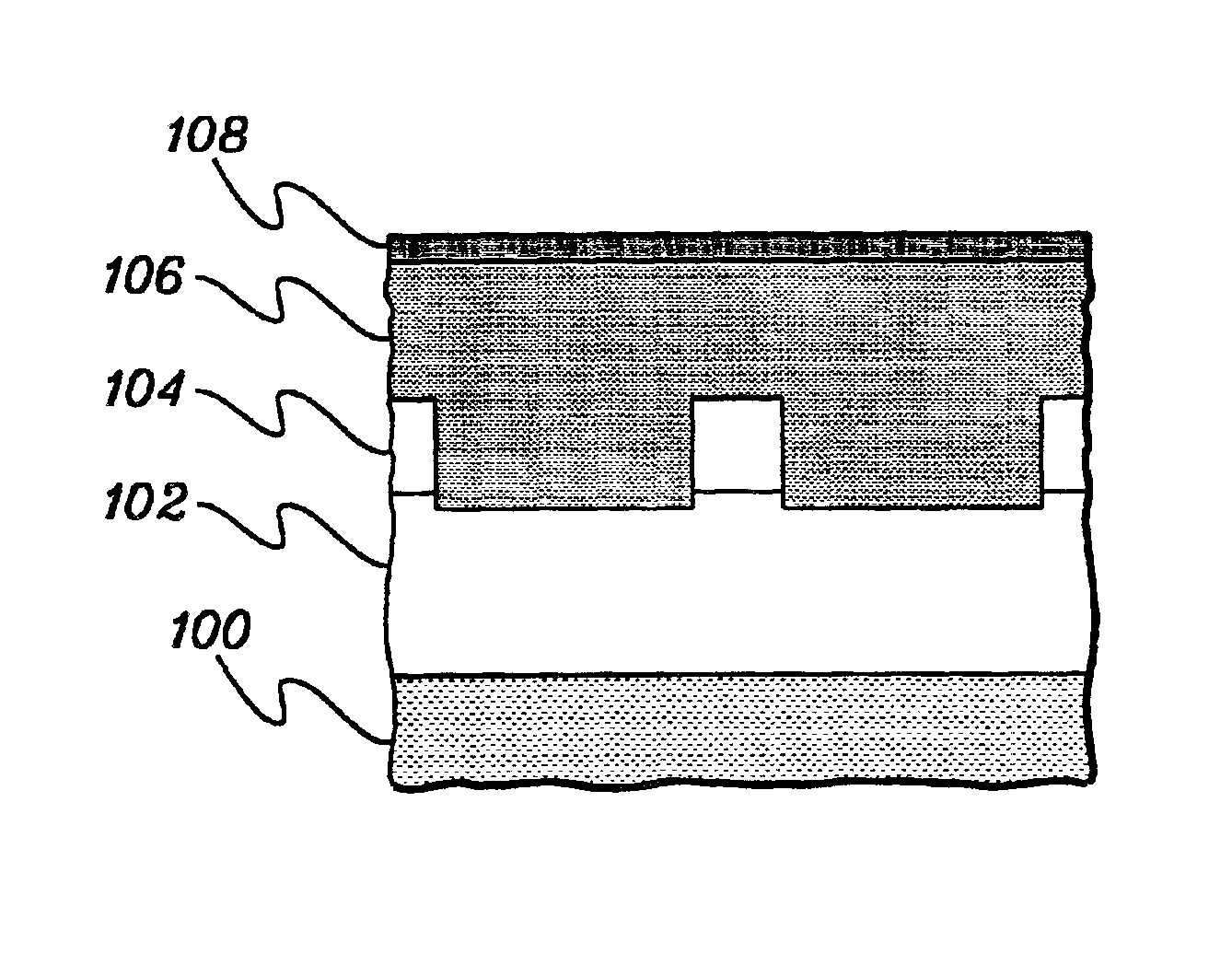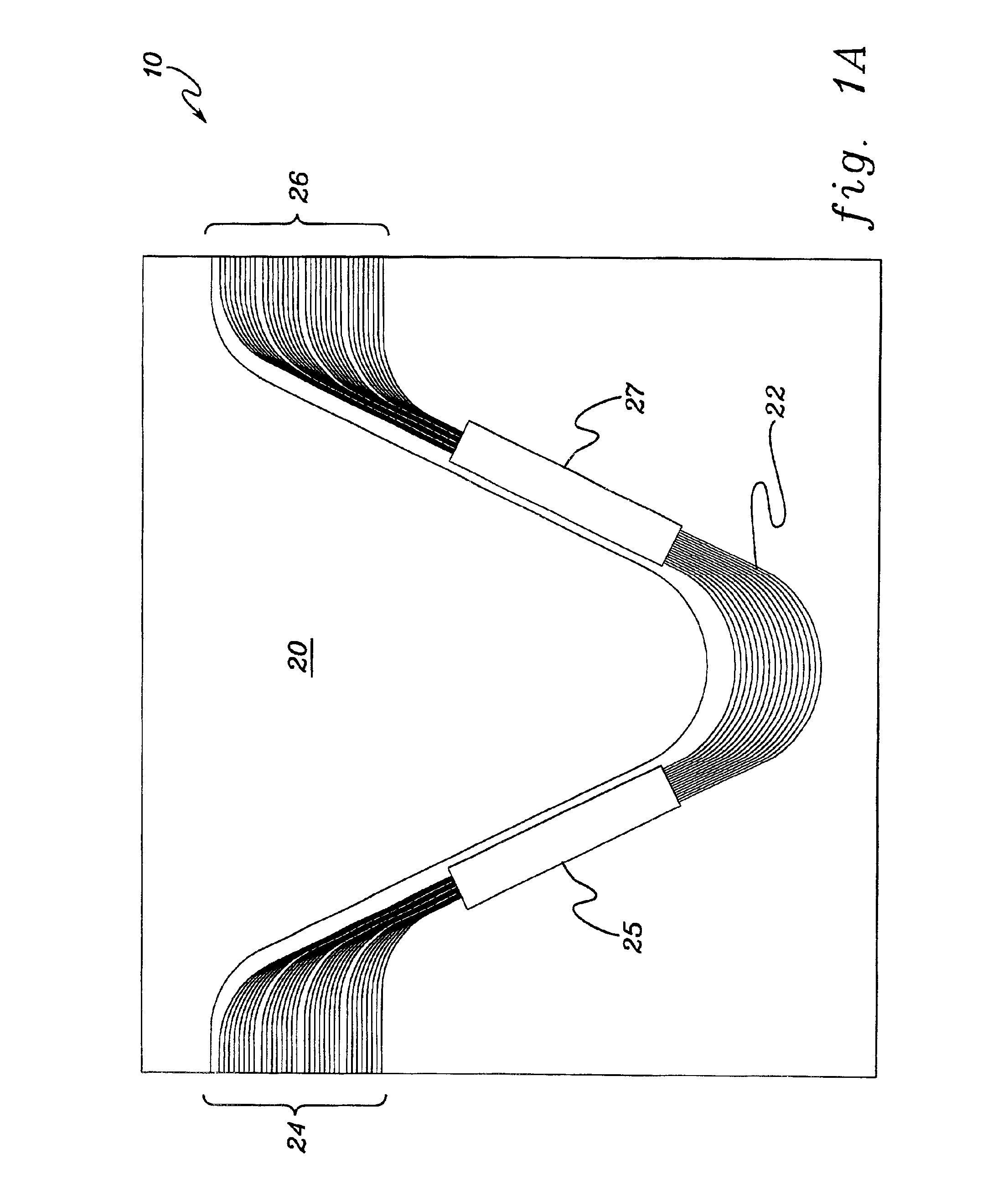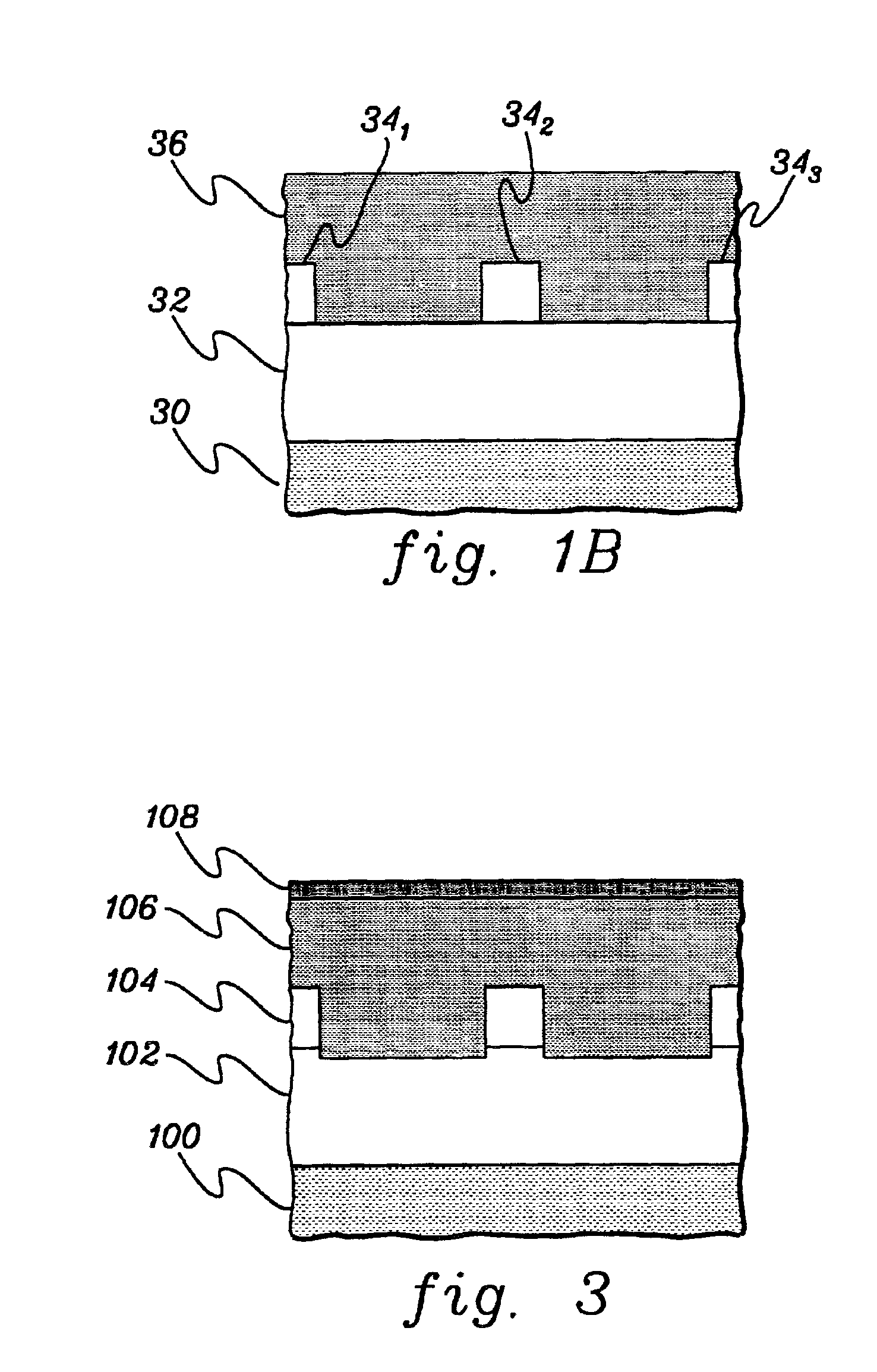Waveguide stress engineering and compatible passivation in planar lightwave circuits
- Summary
- Abstract
- Description
- Claims
- Application Information
AI Technical Summary
Benefits of technology
Problems solved by technology
Method used
Image
Examples
Embodiment Construction
[0024]With reference to FIG. 1A, an exemplary planar lightwave circuit (PLC) 10 is shown in the form of an arrayed waveguide grating (AWG) formed over a substrate 20 (e.g., silicon). As known to those in the art, an AWG uses an array of closely spaced waveguides 22 having carefully controlled, differing path lengths which cause constructive phase interference patterns on the respective optical signals transmitted into and out of the device. This technique is useful for multiplexing or demultiplexing optical signals passed between the array input / focusing region 24 / 25 to the array output / focusing region 26 / 27. The tight spatial and thermal tolerances necessary for proper operation of array 20, as discussed above, lead to the requirements for effective packaging and sealing for use in adverse environmental conditions. Moreover, as discussed above, waveguides 22 are highly susceptible to stresses, thus imposing the additional requirement of stress engineering during their fabrication.
[...
PUM
 Login to View More
Login to View More Abstract
Description
Claims
Application Information
 Login to View More
Login to View More - R&D
- Intellectual Property
- Life Sciences
- Materials
- Tech Scout
- Unparalleled Data Quality
- Higher Quality Content
- 60% Fewer Hallucinations
Browse by: Latest US Patents, China's latest patents, Technical Efficacy Thesaurus, Application Domain, Technology Topic, Popular Technical Reports.
© 2025 PatSnap. All rights reserved.Legal|Privacy policy|Modern Slavery Act Transparency Statement|Sitemap|About US| Contact US: help@patsnap.com



